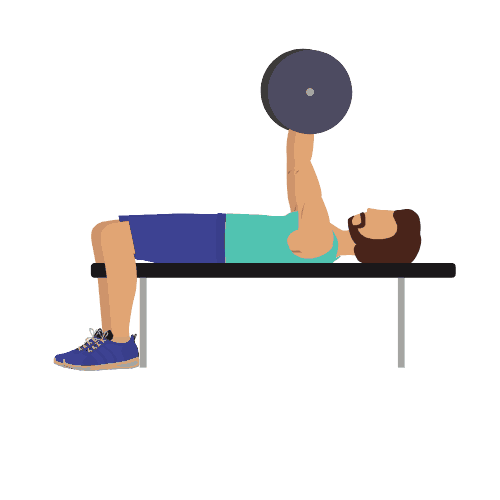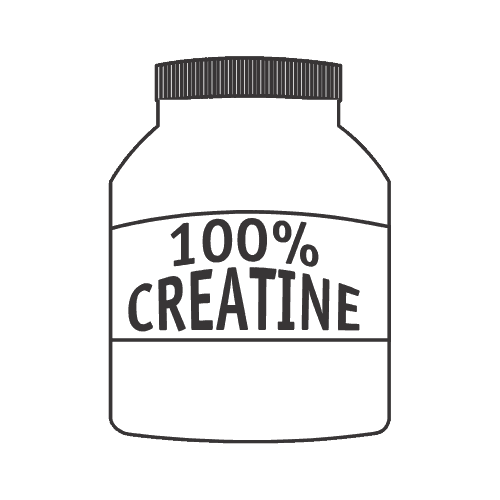How to Gain Muscle:
The Definitive Guide
This is the definitive guide to building muscle mass.
And let me be clear about something beforehand: there is no shortcut that will let you put on muscles “fast”.
Yet many self-appointed experts and fitness coaches promise seemingly impossible results within no time at all.
I am bored of all that rip-off. I wanted to create something different.
A piece of content that is comprehensive and thorough.
I’ll cover everything indispensable there is and cut corners on superfluous things that purely overcomplicate all.

Fitness is not rocket science. Yet, many “coaches and fitness gurus” spread misleading information.
There are hundreds and thousands of training and diet programs out there that promise fast, and wondrous results.
But is there any truth behind it?
To be frank, some might work, but the majority of those programs is complete nonsense and rip-off.
I am not going to lie to you…
Building muscle is a marathon and not a sprint. It simply takes time.
However, too many people overcomplicate the basic concept and make their lifes harder than it needs to be.
This guide is going to be the solution to all your problems. Covering all the essential aspects that are inevitable for building muscle the proper way.
All the necessary information gathered in one place.
The best part?
It’s right here!
So, without further ado, let’s dive right in!
Contents
Chapter 1
Learn the Fundamentals of Gaining Muscle
When starting something new, let it be a sport or hobby, you’re always beginning from scratch, right?
Exactly, and that does not change in bodybuilding.
Before you move heavy weights, sculpt your dream physique or maybe compete on stage, we all need to master the basics.
That’s why I want to start this guide with the fundamentals. Namely, understanding the muscle building process that takes place in our body or the rate of muscle gain that is possible without using performance-enhancing substances.

The Muscle Building Process
Survival of the fittest is nothing new. Over millions of years, animals and humans adapt to changing circumstances in order to survive.
Well, why is this important here?
Building muscle is based on the same concept. It is also simply a process in which your body reacts to changing circumstances by adaptation.
In this case by making progress (whether by increasing weights, volume or reducing rest times between sets), these are the changing circumstances.
In order to stimulate your muscles to grow you need to apply a load greater than your body is used to.
How does that look like?
In this case by training progressively. Whether that is achieved by increasing weights, volume or reducing rest times between sets, these are all triggers to get your muscles to grow.
After every overloading workout you damaged muscle cells to the bitter end. These are so-called microtrauma that have to be repaired and as a result, your body builds bigger and stronger muscles to prepare for and withstand even heavier forces in the future.
So, to capture the important message: there is no way around progressive training!
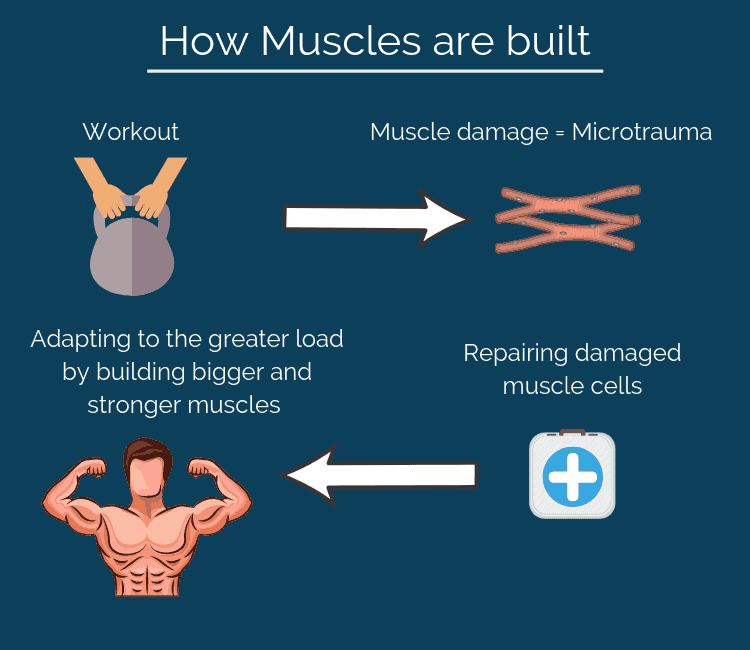
How much Muscle can you actually Build?
As I mentioned earlier in the introduction, there are many programs promising you to build muscle faster than actually possible.
With this in mind, not only is it beneficial to be aware of what is achievable for your ego, but also to reveal and detect rip-off programs.
So how much muscle mass can you actually gain as a natural athlete?
First and foremost, we’re often the biggest obstacle on our journey to success. For some it may be the decreasing dedication that have been set too high. Others have problems keeping their diet appropriate and some just lack consistency.
But besides that, granted that every parameter such as sleep (including quality), nutrition as well as training can be judged as optimal, then according to Bodybuilding.com (considering high-level athletes) can build up to 23 pounds per year, which is converted around 10kg.
Keep in mind that we’re talking here about beginners and not advanced athletes who are already present for some years.
The author goes on and says that it’s physiologically not possible to build more than one pound of lean muscle per week.
Hypertrophy of the muscle complex has been shown to be controlled by what is known as protein turnover (the breakdown of damaged muscle proteins and creation of new and stronger ones).
This process simply takes time.
Just as the many living organisms around us in nature require time to grow, so do our muscles. In our enzymes the protein turnover rate occurs approximately every 7-10 minutes. In the liver and plasma its every 10 days.
And in the hemoglobin it’s every 120 days. In the muscles, protein turnover rate occurs approximately every 180 days (6 months). This lends even more support to the observaton that the turnover rate limits the natural body (of non drug-using athlete, bodybuilder) in building muscle quickly.
The Colgan Institute of Nutritional Sciences run by Dr Michael Colgan PH.D., a sport nutritionist explains that in his extensive experience, the most muscle gain he or any of his colleges have recorded over a year wa 18 1/4 lbs. Dr Colgan goes on to state that “because of the limiting turnover in the muscle cells it is impossible to grow more than an ounce of new muscle each day.”
The longer you train, the harder it becomes to further add size. After years of consistent hard and proper training it takes several months if not a whole year to roughly add any lean muscle at all.
This can be explained by the Law of Diminishing Returns.
What’s the key takeaway?
Well, it basically says the longer you work out the more effort is required. In other words, the longer you train the more difficult it becomes to further build muscle.

Note that these are ficitious numbers and not accurate figures. It simply serves to clarify the point.
Relatively speaking, the required effort to improve increases over time.
Moreover, when talking about building muscle mass not everything that makes you heavier is purely muscle. A large part consists of water and fat that is a byproduct of being in a calorie surplus state.
So, before you purchase any fitness or diet program, remember what you’ve learned today.
Everybody who’s trying to convince you to build muscle the fast way can most likely be considered a fool.
I am not going to lie to you, so here’s the truth…
Physical changes take time. It’s as simple as that.
Similar to the rate of muscle gain, there is also the so-called muscular potential. It basically calculates based on individual variables (such as height and weight) your maximum muscle mass that is naturally achievable (without use of performance-enhancing substances).
Common methods are the FFMI (Fat Free Mass Index) and other formulas develoepd by scientists like Eric Helms and Martin Berkhan.
If you want to assess your muscular potential, you can use the calculator from StrongerByScience.
What's next?
Here are some of my favorite resources that will help you to brush up on the fundamentals of gaining muscle.
Chapter 2
Find the right Training System to Maximize Results
Your training program is the foundation. It provides you with a clear guideline concerning all aspects of your workout. If you have the wrong training program, you can bleed dry as much as you want but that won’t change much unfortunately…
So, it is crucial that we find the right program for your goals.
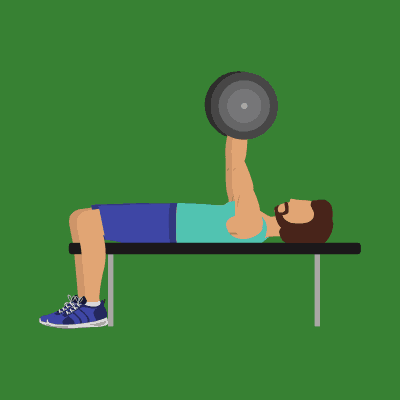
Determine your Objectives
First of all, it is crucial that you have a clear vision of your goals.
Do you want to look more aesthetic? Or do you want to lose weight?
What if you want to compete on stage in the near future?
So far so good. In order to be realistic you have to be honest with yourself and determine how much time you can and want (!) dedicate to that purpose on a consistent (!) basis.
Little is more frustrating than raising the bar while being highly motivated but eventually failing to accomplish them…
Therefore, it is important to co-ordinate your time investment alongside your goals. There is no point in striving for the highest targets but merely freeing up time for one workout every week.
I recommend to use SMART goals as these are meant to be specific (S), measurable (M), attainable (A),relevant (R) and time-bound (T). More on that in the resource section at the end of this chapter.
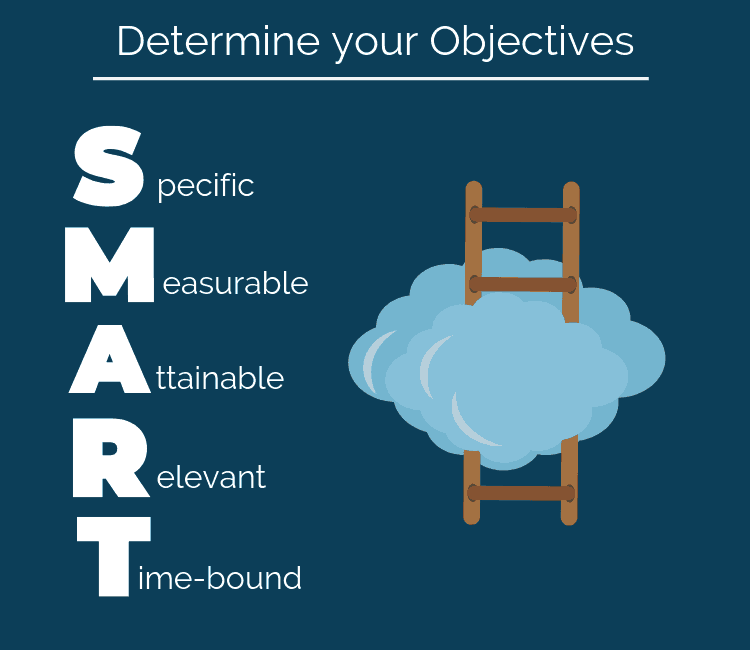
You might ask yourself: fair enough, but how often and intense do I actually need to train?
Don’t worry, I am going to cover that later on in this guide…
Learn to enjoy hard training
As contradictory this might sound, there is a lot of truth behind it.
On the one hand, you need to have a training program that is fun, otherwise it will be very tenacious to endure over time. This oftentimes gets neglected very easily, but you really need to find a program you enjoy to be consistent with. On the other hand, hard workouts are a prerequisite for success to success. Using the same weights for years won’t lead you any further.
Going beyond your limits is nothing special. Get used to it.
You need to leave your comfort zone in order to achieve greatness.
Trial and Error
Fitness gurus and other wiseacres (maybe from your gym or even friends) suggest “special” and brand-new training programs to you, but in reality no one knows your body better than you do.
makes sense, right? How is a stranger supposed to know as much about your body than you do?
There is no better way than actually starting one program in practice and testing it out for several weeks. I would give every program at least 6-8 week up to 3 months of time before you reach a conclusion.
Why?
As I mentioned earlier, physical change needs time.
Just as little as Rome was built overnight, you won’t wake up with a physique like Dwayne Johnson tomorrow morning.
After you determined your goals and made your first trial, it’s time to choose a training split that is aligned with your goals.
Give it some time and see how your body responds to different approaches. If you’re not feeling good after several weeks of trial, then don’t worry. You tried and that’s what it is all about, finding out what works best for you.
With this tactic, overtime you’re in charge of priceless and valuable insights. You will be able to align your training to steady changing circumstances and consistently improve.
What's next?
Down below you can find awesome resources that will give you an impression of several training systems and helps to find the right one for your goals.
Chapter 3
Train Smart for Optimal Muscle Growth
You’ve found the right training program. Well done!
You’re clear about your goals are and block enough time to achieve them. Yet, without the right strategy, your training system is basically just one of many and not any better.
Adopting the appropriate volume, frequency and intensity to your very individual body is absolutely indispensable!
And that is exactly what we’re doing next. Clarifying the important variables volume, intensity and frequency that interact with each other when it comes to gaining muscle.

What's the right Volume for Optimal Muscle Growth?
On a final note before we move on, I take it for granted that all of you obey proper exercise technique and make use of full range of motion. This on the one hand reduces the risk to injuries but also turns out to be more effective since you’re stressing the targeted muscle.
So, all in all making your training more sustainable and successful.
So, what’s volume good for?
To put it simply, volume helps us to assess whether we’re making progress or not. For all that feel overwhelmed right now, no worries. I’ve got you covered.
Check out our complete guide about the optimal volume for hypertrophy if you’re not familiar with that topic yet.
We can caculate it as follows:
Volume = Weight x Repetitions (reps) x Sets
As several studies and sources reveal, volume is the most important variable for hypertrophy.
There are 4 different volume categories that can be classified.
- MV = Maintenance Volume
- MEV = Minimum Effective Volume
- MAV = Maximum Adaptive Volume
- MRV = Maximum Recoverable Volume
These variables come with particular benchmarks for each muscle group.
Volume is always counted on a weekly basis. For example, when training your chest 3 times with 4 sets each, that gives you a total weekly volume of 12 sets.
Now the categories come into play. Everybody has an individual range where these values can be found.
To make it clear, Person A trains each muscle twice on a weekly basis. His chest is not capable of a very high frequency as it takes quite some time to recover.
In that case, the first category to be noticed is the MV. So, the least amount of volume that maintains your muscles current size.
Next, the MEV already brings some growth but not optimal. However, the MAV is exactly that, stimulating optimal muscle growth.
Last but not least, the MRV describes the maximum volume that we’re likely to sustain before getting into a state of overreaching.
For optimal progress, I recommend to split your training program into mesocylces. One mesocycle normally lasts 4-5 weeks + 1 week deload afterwards (only if necessary!).
During these 4-5 weeks you accumulate more and more volume. After the end of week 4-5, you should be reaching a point at that you’re depleted.
What is a deload?
A deload is basically a light training phase in which you reduce the volume by 50-60% with the goal of boosting recovery of your passive structures (joints, tendons and ligaments) and muscles. For further detailed information, go ahead and read our deload guide.
What’s the bottom line?
Contradictory to the oldschool approach to training, we’re focusing on the smart but effective side of the coin.
Instead of training to musculature failure every workout, you terminate every set with reps in reserve (RIR). This way our regenerative capacity is greater in comparison and this also leads to enhanced progress in the long run.
So, we’re less stubbornly dogged on short-term but rather the long-term results.
Working with maximum weights (1-2 reps) and musculature failure on a daily basis, your body will burn out sooner or later. Thereby the burden on your Central Nervous System (CNS) peaks.
Getting back to the imaginery chest volume, here’s a graphic that portrays the average volume landmarks for chest based on Dr. Mike Israetel.

As you can see on the graphic, the volume landmarks gradually increase from the MV up to the MRV.
These are solely average figures rather than accurate personalized numbers.
Yet, I recommend using them as a starting point to find out where your individual landmarks can be put at.
How intense should you train?
Briefly speaking, there is no strict recommendation. However, there are some rules directives that are pretty accurate and useful.
First and foremost, you need to train hard to progress optimally.
I am not going to lie to you…
There is no way around hard and intense workouts.
But what can be considered hard enough and too hard?
If you train so hard that the quality of your other workouts suffers and your overall performance decreases, then that is exactly what is called too hard.
Even that needs to be seen relatively. If you train each muscle once a week, you’re surely capable to go a lot heavier.
Be aware for the worst case. For example, training a muscle until you’re crippled is not always the best idea, even though it sounds like being a tough guy, right?
This can limit your capacity to train that muscle again in the near future.
So, what’s the bottom line here?
Training intensity needs to be aligned to your frequency.
At the end of the day, progression and consistency are key in bodybuilding. Likewise, as finding the right training program, it’s crucial to appropriately align frequency and intensity to that very program and your superior goals.
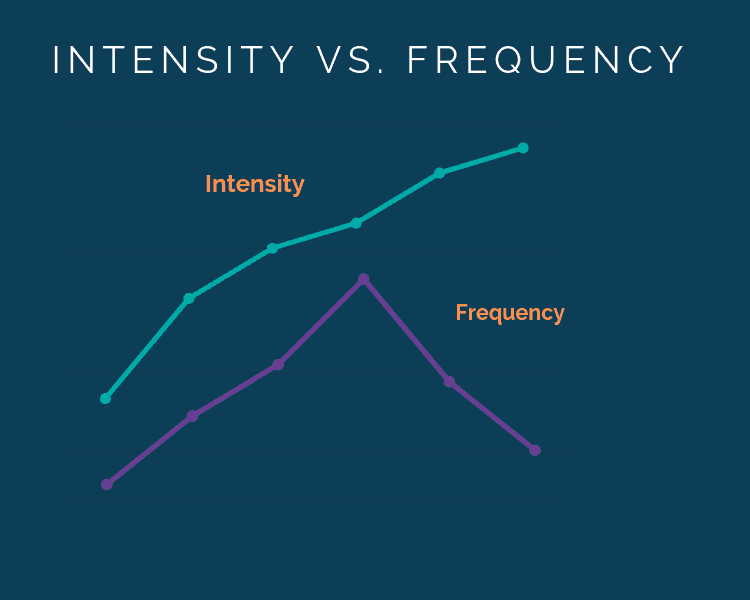
To be precise, the higher the intensity of the workouts, the lower the frequency has to be since your body has to deal with more fatigue and stress.
If you invest in beyond-failure sets or even entire workouts, you need to reduce your overall volume, otherwise you’ll stagnate.
Nevertheless, it’s a good idea to implement a challenging workout every now then to go beyond your limits. This has proven positive physiological (obviously) as well as psychological benefits.
How often should you train?
Before getting into detail, what does frequency mean when talking about bodybuilding?
Basically, frequency divides your training volume into several training sessions.
The training frequency describes the number of training sessions of a certain muscle group during a certain time. Normally, it is common to use a conventional 7-day week as a timeframe and then assess how often a certain muscle group is trained.
To illustrate that, if you train chest on Monday, Wednesday and Friday, that is a training frequency of 3.
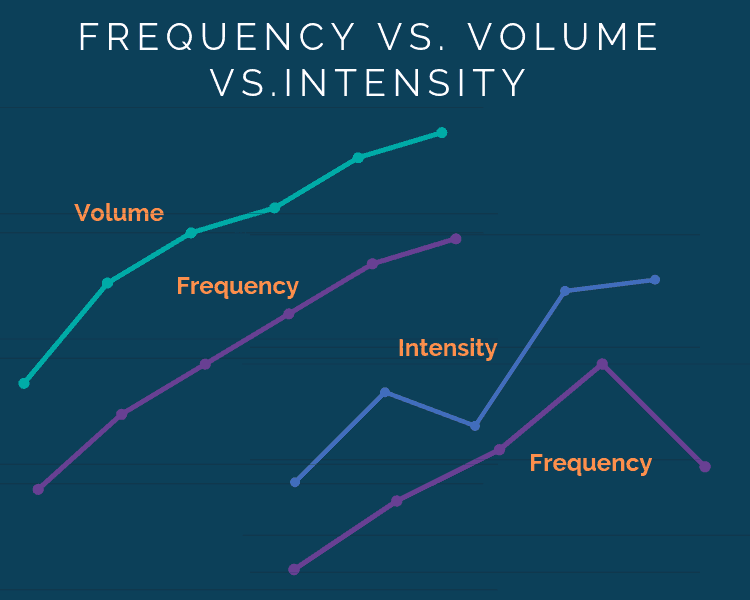
Volume interplays with frequency. For the simple reason that the more you train the better you’re capable to split your volume over the week rather than squeezing all in a single workout.
Imagine your program contains 30 sets of chest work per week. If you were to do all these sets in a single session, your performance after the 15th set would probably be at rock bottom, right?
However, if you split those 30 sets into 3 different workouts of 10 sets, you’re able to handle a lot more volume during each session and most importantly with more consistent performance.
So, the lower your frequency, the higher your volume is going to be which is going to be detrimental for the overall performance.
Which frequency can be considered as optimal?
Well that obviously varies individually but if you would ask me for a rule of thumb, I recommend to stress every muscle at least 2 and maximum 3 times per week. This means a frequency of 2-3 depending on your goals, time management and motivation.
Likewise, a higher frequency increases your workout quality as you perform fewer sets that lead to mental and physical fatigue.
Maximum concentration is probably no longer effectively possible after 20 sets of squats…
The result?
The technique suffers, the targeted muscle is not stressed optimally and the risk of injury increases.
To clarify this aspect, let’s just go through a small example.
Let’s assume we want to perform 9 sets throughout the week for chest and the performance fall off per set is constant at 3%. Of course, the last number is completely fictitious and is dependent on many different factors.
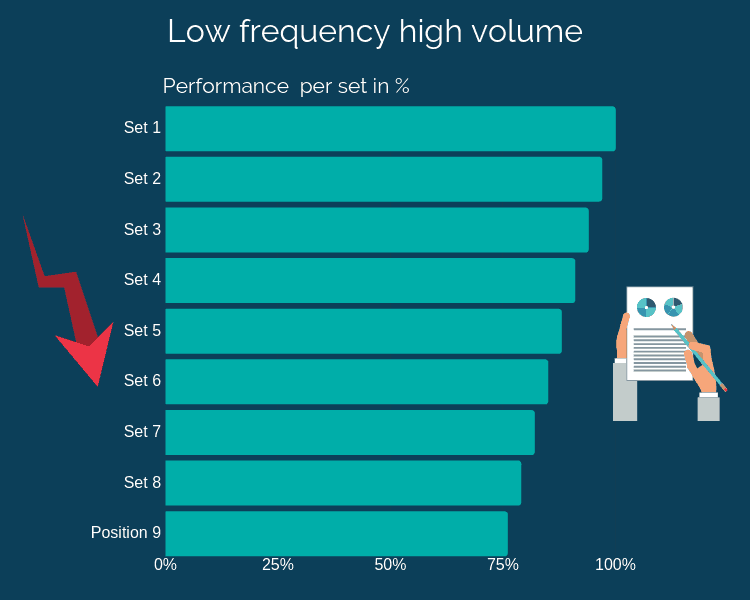
Average performance for frequency of 1
In contrast, this second table comes up with an average performance of 88%. Thus, the average performance per chest unit is once 97% (frequency = 3) and once 88% (frequency = 1).
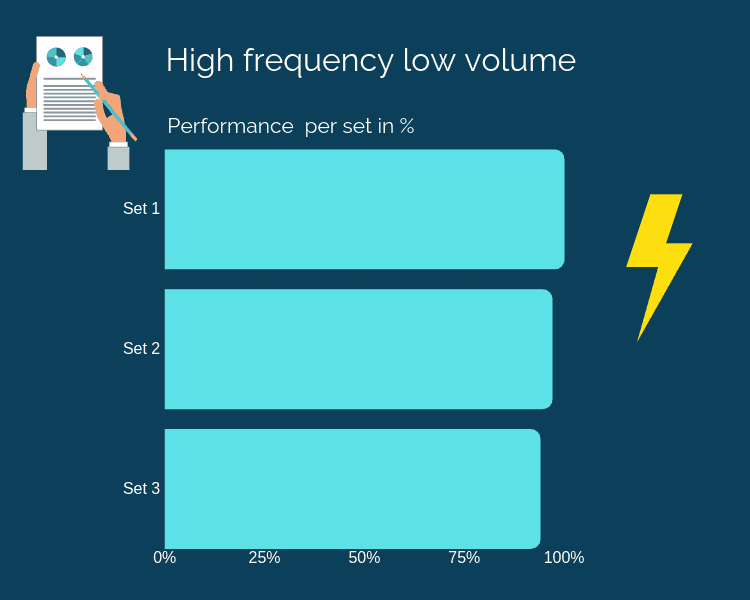
Average performance for frequency of 3
Since we train chest three times a week, we only have to complete 3 sets per session in order to get to the total of 9 sets. This results in an average performance of 97%.
To sum up, I recommend a training frequency of at least 2 and maximum 3 workouts per muscle group (in a 7-day period) for optimal muscle growth.
What's next?
To follow up on what we’ve just covered, choose one of the resources below to dig up deeper.
Chapter 4
Adopt the right Diet to Optimize the Outcome
You can train perfectly fine, having found the right training program and aligned frequency, intensity and volume accordingly. Yet, if you don’t obey the rules of a proper diet, you won’t get far.
Most people claim that success in bodybuilding accounts 70% to the right diet and only 30% to training.
Well, is that true?
I definitely agree with that…
You can train shitty but if you eat enough of the right foods you will get way better result than the other way around.
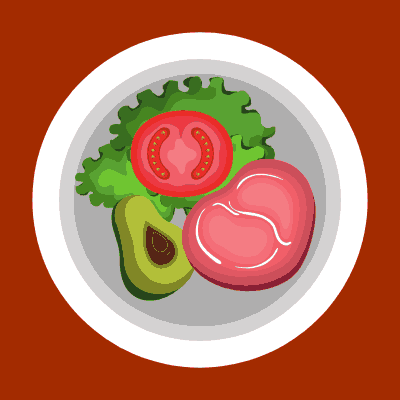
Get into a Caloric Surplus State
So, let’s dig into the secrets of the right diet to gain muscle.
First of all, what are calories?
In a nutshell, calories are the source of energy for the human body. All the processes that take place 24/7 within our body require resources. Those resources are the so-called calories which we incorporate through our diet (while eating).
Whether you gain or lose weight is pretty straightforward and simple to explain.
If you’re on a calorie surplus, which means exceeding your basal metabolism (the amount of energy required to ensure proper functionality of your body), you’re gaining weight.
To put it simply, in this state you’re eating more than your body needs to maintain size and functionality. That way you gain weight, the other way around leads to weight loss.
It’s that simple…
So far so good, being on a calorie surplus is THE MOST IMPORTANT aspect in order to gain muscle.
You might be thinking now: but how do I figure out how much I have to eat?
Bodybuilding.com has a super handy and easy to use calorie calculator. There you insert individual data like your height, weight, age and daily level of activity. The calculator does the rest for you by evaluating your required intake to properly build muscle.
Now that you have a first impression of how your daily calorie intake should look like, we need to make some additional adjustments.
All those calorie calculators (of course you can work with a different one) produce only average figures, so they’re not 100% individually tailored matching your unqie physique.
Some people might need less than they suggest you to eat, others might even need more…
There are and always will be exceptions and you’re maybe one of them. Yet it’s a first good impression to work with.
A different approach would be to first calculate your basal metabolism (being in a maintenance state, not gaining but also not losing weight) and then adding 200-300 kcal on top of that.
This way we make sure that we exceed our basal metabolism and begin to gain.
Why exactly 200-300 kcal?
Well, there is no specific rigid number here. This is just a good benchmark to effectively gain weight.
Whether you exceed your basal metabolic rate by 200, 300 or 500 kcal does not really matter in the first place. The fact is, you’ll gain weight either way. The only difference concerns the speed how quickly you gain weight(!).
On the one hand, of course, you could also add 1000kcal on top, but let me tell you that would only result in massive weight increase whereof most consists of fat and water. On the other hand, if you’re merely 50 calories above your basal metabolic rate, then it literally takes for ever to see any visible results at all.
So, what’s the bottom line?
Most importantly, you need to be on a calorie surplus. Moreover, find the right balance between too few and too much additional calories for optimal muscle growth. Otherwise, you’re wasting potential.
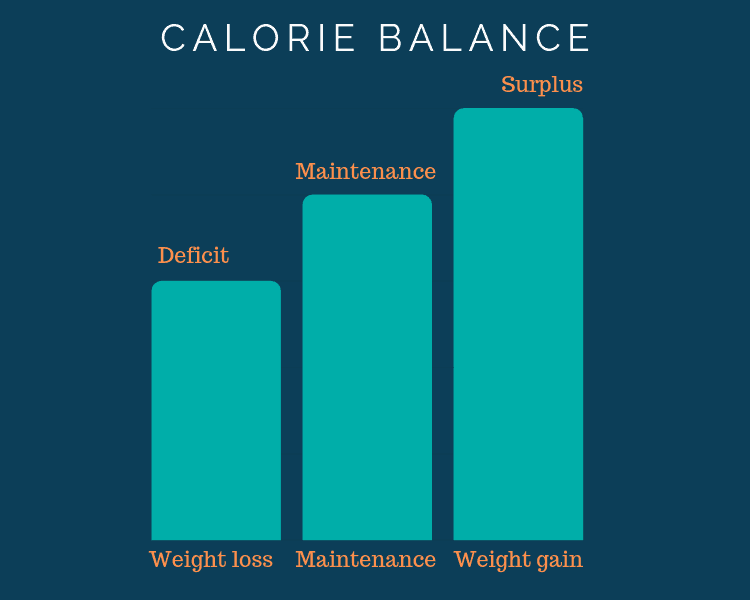
Build the foundation of your diet with Macronutrients!
From a viewpoint of importance, macronutrients come after calories on second place.
Proteins, fats and carbs (carbohydrates).
Especially the former is crucial for building muscle. Most people claim that an athlete should take around 2g of protein per kg of bodyweight daily.
For example, if you weigh 80kg that results in 160g of protein every day.
What’s the truth here?
As science is, there are studies supporting that claim but equally you can find studies that reveal the exact opposite.
I can tell you from my personal experience, I used to eat that particular 2g of protein per each kg of bodyweight on a daily basis and it did not do me any harm. Nevertheless, I cannot assure and confirm that it is inevitable to consume as much protein.
Maybe I would’ve got the exact same results with less. Maybe not. Who knows?
The point is, you need to try out different suggestions and approaches to figure out what fits your body the best.
There won’t be any recommendation that is the number one life hack for your current condition.
So, to sum up: many people recommend around 2g of protein per kg of bodyweight!
Next up, fats. Here the recommendations varies between 0.7-1.0 g per kg of bodyweight.
Remember, we’re talking about good fats not simply eating fatty burgers from McDonalds. I recommend using foods like olive oil, avocado and fatty fish (e.g. salmon).
Lastly, carbs. There is no particular rule of thumb here. Just stock up all your remaining calories with carbs and you’re good to go.
In order to calculate all that, here is what you need:
- 1g of protein = 4kcal
- 1g of fat = 9kcal
- 1g of carbs = 4kcal
Now, after we’ve talked about the two most important variables in gaining muscle, we get into more detail.
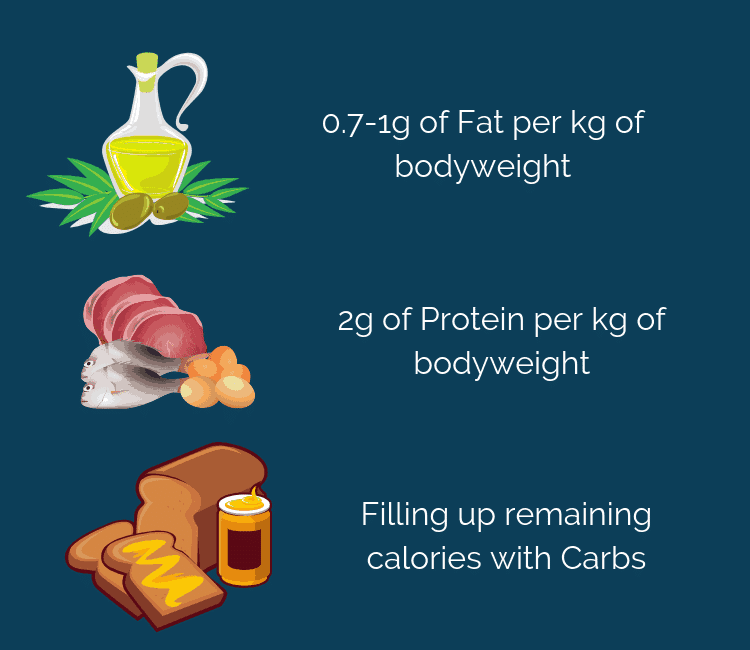
Don't neglect Micronutrients
I am not going to lie to you, guys…
When I started working out I did not give a fuck about micronutrients. Just eating enough calories and getting those proteins in and you’re good to go, at least that’s what I thought.
Frankly, it works though. I did make some good gains even without eating lots of vegetables and fruits on a daily basis.
Don’t get me wrong, I ate quite healthily and had a balanced diet but I wasn’t really sparing a thought about micronutrients back then.
Nowadays it looks differently, I am way more committed to my diet than I was before. So, I try to get some fruits and vegetables in every day, not particularly counting the exact amount as long as I get some of both.
I don’t want to encourage anyone to cut corners on micronutrients, but to be fair it works without obtrusive obsession. But here again, I don’t know how much better my results would’ve been when I’ve had put more emphasis on that…
Not to mention all the health benefits of the vitamins, fiber or antioxidants that contain most fruits and vegetables. A Study by the Havard Medical School and other resources show that vitamins and minerals are vital for growth, immune function, brain development and many other important functions.
Depending on their function, certain micronutrients also play a role in preventing and fighting disease.
So, make sure to eat fruits and vegetables on a daily basis for best performance!
Stay hydrated!
Not only food is relevant, but sufficient liquid supply through beverages is also indispensable. Try to make water and tea your standard drink.
The advantage is obvious: 1 liter of water brings it up and writes down 0 calories.
For intense exercise or increased calorie requirements, I recommend adding water or fruit juice spritzers in ratio 1:1. Avoid sodas and other sweetened drinks!
Coffee is best served black. However, the performance-enhancing effect of caffeine can only be used by those who have not become resistant to excessive consumption.
You should abstain from alcohol as much as possible. On the one hand, it contains a lot of calories which you could rather fill with a proper meal. On the other hand studies reveal that alcohol consumption inhibits your growth hormone secretion, your protein biosynthesis, and fat burning process.
Experts recommend drinking 1L of water per 20kg of bodyweight, so for an average male of 80kg this would result in 4L per day. More precisely, the Mayo Clinic comes up with recommendations of 3.7L (15.5 cups) of fluid for men and 2.7L (11.5 cups) for women.
These recommendations cover fluids from water, other beverages and food. About 20 percent of daily fluid intake usually comes from food and the rest from drinks.
Remember that those recommendations depend on many aspects like your level of activity (hobby athlete, powerlifting etc.), the environment (is the climate humid or dry?) and the overall health level (your body loses more fluid when sick)
As always, those recommendations concern the optimal state of health in professional athletes. Many of us don’t fall into that category, however I still try to drink around 4-5L per day (currently I weigh around 85kg) in order to maintain proper functionality of my body.
During my workouts (especially in summer) I drink an additional 1-2L, depending on the intensity and how heavy I transpire. Fluid that your consuming during intense exercise has to be counted separately and cannot be added to your general requirement.
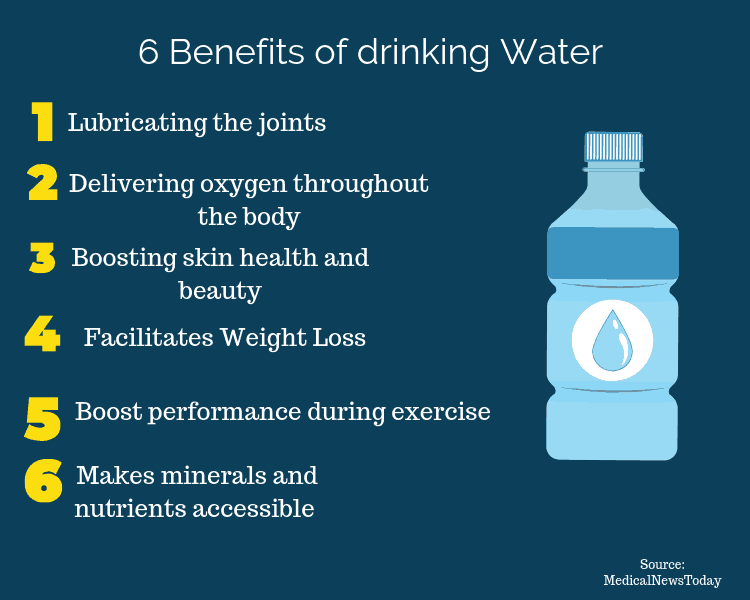
What's the best Diet form?
Low carb, High carb, Low fat, High fat, Intermittent fasting, Paleo, Vegan, Veggie, Ketogen and many more…
We’ve all heard about these diet forms. But which one is the right one to choose?
Honestly, forget about diet forms.
Before I continue, a short side note.
The following lines are primarily meant for people who don’t have particular allergies, cases of incompatibility or heath problems with certain foods. For you it definitely makes sense to specifically orientate your diet to bypass issues.
Everybody else? I would recommend to simply eat according to your personal goals, preferences, tolerance and taste.
I oftentimes see many people stiffen on one particular diet and overcomplicating the whole aspect of a healthy diet. Eventually these people make their lives a lot harder as it actually has to be.
Because let’s face it, your diet should be simple, enjoyable and delicious, right?
So, unless you’re vegan, veggie or paleo (or any other diet form) based on your belief, then I do recommend to picking your favorite foods from any type of diet and just eat according to your physique goals.
That way you don’t limit your diet as narrow and as a result you’re more flexible to decide over your meals.
What’s the bottom line here?
As long as you eat enough calories, protein, fats and carbs. Drink enough water and ensure proper micronutrient supply, then the diet form is of secondary importance.
Choose whatever is most convenient for you to be realized on a consistent basis.
Fine Tuning
This section might only be relevant for advanced athletes who have (!) already optimized their training and nutrition in the above-mentioned aspects.
What does fall under the category of “fine tuning”?
Well, things such as meal frequency and timing can be view in this light.
There is no clear answer. Opinions differ on both question.
Some people swear on having 3 meals throughout their day whereas other fitness gurus claim that it’s best to crank up your protein synthesis every 2-3 hours with food.
Anyhow, optimizing these small details probably accounts to merely 1-2% of your results. But here’s point, for advanced athletes 1-2% is a huge impact, for beginners this simply does not really make a big difference.
So, if you’re not on such an advanced level yet, don’t worry about it. Rather concentrate all your energy on a clean diet and training.
Because at the end of the day, your calorie intake determines whether you gain or lose weight. Especially for beginners, it is tremendous to be clear on these basic aspects.
Keep the main thing the main thing unless getting more advanced.
Whether you just want to get more into detail or you exactly need to improve there upon, I’ll include valuable links at the end of this chapter for you!
Eat the right Foods!
To complete this chapter, here’s a short list of some of my favorite muscle building foods!
Do these foods have something special that facilitates building muscle?
No, these are just casual foods with a high percentage of protein content.
You can build muscle with literally any food (!) as long as you obey your macro/micro nutrient demand. Whether consuming proteins by plant-based foods or meat doesn’t matter as long as you supply enough proteins overall.
Just as I said in the ‘diet form’ section, there is no shortcut, “best” or “universal” way. Expose yourself to many different aspects and learn by trial and error.
So, here’s the promised list of protein-rich foods (average protein content per 100g):
- Eggs = 13g
- Salmon =20g
- Chicken Breast = 25-31g
- Greek Yogurt = 4g
- Tuna =20-25g
- Lean Beef = 26g
- Shrimp = 24g
- Soybeans = 36g
- Cottage Cheese = 11g
- Turkey Breast =29g
- Tilapia = 26g
- Beans = 21g
- Edamame = 11g
- Quinoa = 12g
- Scallops = 80g+
- Lean Jerky = 30g
- Chickpeas = 19g
- Peanuts = 26g
- Buckwheat = 13g
- Tofu = 11-12g
- Pork Tenderloin = 18g
- Milk = 3-4g
- Almonds = 21g
- Bison = 28g
What's next?
Below I included some in-depth guides that take up on the aspects to get you the optimal nutritional needed. Choose whatever sounds most interesting and get started now!
- Micronutrients Guide
- The Ultimate Guide to Muscle Protein Synthesis (MPS)
- Basics of Nutrition Guide
- How much Water Should you Drink?
- 26 Foods that help you to build muscle
- Tips to develop a proper Nutrition for Muscle Growth
- What and When Should You Eat?
- Bodybuilding Diet
- 6 Proven way how to build muscle by diet
- Why Meal Prep is Important
- Pre workout Nutrition
- Muscle building diet guide
Chapter 5
Develop the right Mindset to boost your Performance
Without the right mindset you won’t get far.
Annually after New Year’s Eve the good resolutions convey millions of people doing more sports or changing their lifestyle fundamentally. Well, at least for a couple of weeks…
During that time, the gym is so crowded that breathing becomes difficult and you have to fight for weights and machines, unless you want to wait endlessly.
January goes by, nothing’s really different but suddenly around February, the majority disappears and falls back into their old habits… But why is that?
Those people don’t have the mental toughness to win this game.

To be fair though, we all do have those days where we don’t feel like working out, don’t we?
Don’t worry, you’re not alone. That’s completely human.
Especially bloody beginners struggle being consistent in going to the gym. It seems like all the work that they put in leads to nothing…
Do you recognize yourself? I’ve been there too.
The hardest part is to keep going until you spot the first results. That is what motivates you the best! Seeing that all the hard work and commitment finally pays off.
As I mentioned earlier, physical change takes it time, which is why long-term motivation is so crucial.
Consistency is key!
Only with the right motivation, commitment and discipline it’s possible to succeed.
So, let’s discover how you develop the right mindset to boost your performance!
When in doubt, remember why you started in the first place!
Whether you want to have bigger muscles or simply just look more aesthetic. You started for a reason and winners don’t quit!
Who said that it would be easy, huh?
Nobody! If it would be so easy, everybody would look like a professional athlete…

Don't check on others, focus on yourself!
I know we all did that many times, looking at all the other huge guys in the gym being jealous of their physique….
But how does that benefit us? Probably to the contrary, it is frustrating and disappointing us. It might motivate some people but that is rather an exception than the rule.
Of course, it’s normal to look around at what other people doing next to you, but let me tell you something…
You don’t know those guys’ background (how long do they train, how often, their nutrition, supplements etc.), therefore its inappropriate to make a comparison.
Focus on yourself, get your training done, eat enough from good sources and rest suitably.
Work in silence and walk the talk!
Always be the hardest Worker in the Room!
There is a really simple but effective rule: always be the hardest worker in the room!
If you work your ass off, giving one’s all, you have nothing to reproach yourself for.
And trust me, that’s what life is about. Whatever you do, do it with 100% dedication or leave it!
Go all in or all out.
Life is too short to waste time. So, make up your mind and figure out what makes you happy. Do what you love and love what you do.
Even though we fail sometimes, and trust me we do and will… There is nothing to be embarrassed about, you gave all that you have.
For every time you fail, stand up twice!
If you obey that simple rule, you do not run the risk of being disappointed by yourself. As your diet is optimized, your training gets done without skipping any session and eventually, this will lead you to success not only in fitness but in any area of life.
Prepare yourself for the worst
Whatever that might be, if you start with the end in mind (in this case, “the worst”) things cannot get any worse.
So, you’re automatically all set for what is coming up next. And in most cases, it turns out to be a lot better than you did imagine. It can only get better not worse.
Bottom line?
You’re creating a win-win situation, don’t you?
On a final note, I want to give you one more hint…
Most people really just need to find that inner burning motivation once. As soon as you’ve found it, motivation is becoming ordinary, alike eating, it becomes a habit.
The question you asked before: Do I go to the gym today?
The question now becomes: What do I train today?
This was exactly the case for me after several months of training. Believe me, once you’ve crossed this point, everything gets easier and more enjoyable.
Be prepared that going beyond your limits belongs to the daily agenda. It’s ordinary.
Get out of your comfort zone, that is where all the growth happens. In whatever area of life, leaving that zone is fundamental.
Expose yourself to all those challenges out there and strive for mastery.
Everything seems impossible until it’s done.
So, as Nike says, Just do it!
Whenever you face obstacles, struggling and having difficulties, you can do anything but giving up is never an option!
Develop a Growth Mindset
Some of you might be wondering, what is a Growth Mindset?
Well, let me clarify that as simple as possible.
Using the example of primary school, there are two “types” of mindsets when it comes to kids trying to learn basic math, language, and more.
The first type of mindset is called a “fixed mindset“.
The fixed mindset is characterized by very lopsided thinking patterns.
Either you win, or you lose.
Either you succeed or fail.
Then there is the other type, the “growth mindset”.
By adopting a growth mindset, you stop to make your well-being depending on the end result.
Rather, you base it on the knowledge and skills you have acquired.
Returning to the example of primary school once more, a kid with a growth mindset would not look at an exam as a do or die situation.
In fact, no matter the outcome, it would feel good about learning how to apply multiplication. Because, after all, that’s what these tests are designed for. To make sure that you learn something.
In a nutshell, the growth mindset is concerned with focusing on acquiring skills and knowledge.
So, what can we take out of that to apply for gaining muscle?
Whenever you didn’t make progress as good as you thought you would, don’t consider it as a failure.
Instead, take it as a learning and move on.
Move on to the next program, learn what your body responds to the best and acquire new skills and knowledge on that journey.

Be consistent
As I mentioned earlier…
Consistency is key!
Building muscle is not a sprint but rather a marathon.
There is no shortcut. No way around consistent hard work.
Nobody is going to do the work for you, eating your meals or programing your schedule…
It really comes down to consistency as it does in almost every business.
The more often you do something, the better you get, right?
It’s pretty straightforward, but there is truth behind it.
Hitting the gym or eating clean once in a week won’t change anything. It may change something in your brain temporarily, but by no later than the next morning, that feeling is gone.
You need to play by the rules all day every day.
Of course, that doesn’t mean that you cannot have a cheatday (even though I hold cheap on cheatdays) or dining out with your friends and family is taboo from now on…
Hell no, I am the last person who would proscribe what you have to do and what not.
When I feel like enjoying a beer with my bros while watching soccer and eating a pizza, you know what? I get that beer and that delicious pizza! This quality of living for me, being my own boss.
However, if you want to do that every now and then, you certainly need to put in the work on every other day. Otherwise, these “bad habits” gain the upper hand sooner or later.
So, be aware that nothing needs to be banned, I think life is all about finding the right balance for yourself.
Always remember, be consistent. Get your workouts done and eat your meals (clean!). Then but only then, you can stock up remaining calories with junk food or get some beers if you really want it.
I don’t blame anyone who does that, I am not any different, at least occasionally… 😉
Visualize your Goals
Visualization has some incredible proven benefits that everybody, whether professional athlete, business man or mother, should be aware of.
Playing soccer or visualizing playing soccer, there is no difference in terms of brain activation. Both result in the same outcome.
There are many astonishing examples.
Professional basketball players who visualized every free throw in advance, and you know what? They made 9 out 10 free throws literally every time.
The story of a prisoned Colonel during the Vietnam War. Before being captured, he used to play golf on his home course. His best score was 30, not bad but not really good either.
Now, prisoned for 7 years he didn’t want to give up on playing golf, so he started mentally playing his home course (!) without any gear in his hand. Just his brain was working…
What’s the outcome?
After 7 years, the first time he played his course again, without having had a golf club in his hand for that entire period, he outperformed himself with a 23, which is pretty decent!
Rather you think this might be nonsense or not, give it a try. What do you have to lose? If it works, you’re better off and getting even better. If it doesn’t, you tried and that’s what counts.
Steadily seeking for improvement.
To conclude, adopting the right mindset is crucial in any field of life.
Particularly for things where leaving your comfort zone and crossing that pain zone is daily requirement, mental strength is indispensable.
How are you going to develop your mental toughness?

What's next?
Start your journey right now and choose one of the incredible resources below to take your mindset to the next level.
- The beginning mindset to strength training
- How to develop a Growth Mindset
- How to overcome a lack of motivation
- How to improve mental fitness
- 8 Practical Tips to manage stress
- The right mindset and mental toughness
- Adopt the right mindset in the gym
- How to shift your mindset to reach your goals
- 5 Mindset hacks for better results in the gym
Chapter 6
Optimize Recovery to Exploit your full Potential
By now we’ve covered the important aspects about basic fundamentals, training, strategy, and nutrition as well as mindset.
That’s all well and good, but…
Without having appropriate recovery, nothing really happens.
No matter how hard you train if you don’t sleep enough, get nutritious meals and take deloads from time to time, good luck…
Without further ado, let’s break it down step-by-step what you can do to enhance your recovery for optimal muscle growth.

Get enough quality sleep
As we all know, sleep recharges our battery. Also, it gives us energy for the next day including its challenges and tasks.
Having one night with little or no sleep at all does not always become noticeable. But maintaining that sleep pattern over time would literally break you.
The most obvious detriment of having a lack of sleep is the fact that your workout performance will suffer.
A sleep deprived body tends to give up when it normally would be capable to go even harder…
This aspect alone is a huge negative aspect, since you won’t be able to train progressively if the quality of your session suck. However, there are more negative influences to cover.
Especially for bodybuilders or athletes, it is absolutely significant to optimize your recovery for best results.
A study from 2010 by the American College of Physicians reveals the importance of getting enough sleep.
Wait a minute… What is enough sleep? Don’t worry, we’ll cover that later on…
So, in this study the researchers divided all participants into two groups: Group 1 slept 8.5 hours per night (which is their recommendation) and Group 2: slept 5.5 hours per night (noted to be pretty standard).
The astonishing result, while Group 1 preserved 60 % more muscle, it also lost 55% more fat than Group 2…
So, sleep apparently not only has negative effects on our energy levels but helps in preventing muscle breakdown and promoting fat loss.
As if this wasn’t enough, another study takes it even further…
The researchers analyzed the effects of one night of no sleep (!) on 15 young men
What did they find out?
Well, on the one hand they found that their muscles showed signs of increased protein breakdown. Already after one night of no sleep…
On the other hand, their fat tissue had elevated levels of proteins and metabolites that are involved in promoting fat storage.
So, altogether sleep deprivation can cause some serious detriment. That is, if your goal is to build muscle, then you should do everything in your power to get proper (!) quality sleep.
To put it even further, science shows that lack of sleep negatively impacts your testosterone levels…
The results?
They found a decrease in day-to-day testosterone levels by 10-15% in young men who just had one week of sleep restriction to 5 hours per night.
Along these lines, by now we should all be aware of how detrimental sleep deprivation can be…
So, even more important to ask the question: How much sleep should we get for optimal muscle growth?
According to the American Academy of Sleep Medicine, you should aim to an average of 7+ hours of sleep per night. More active individuals should aim for the higher end and vice versa.
If your current sleep patterns looks different than that, I suggest you make the effort and increase the amount of sleep that you get.
When talking about this recommendation, they do not include daytime naps.
Although naps can and have also shown beneficial effects, it should not be a permanent factor. You can take naps whenever you fall short on sleep during the night or even plan ahead if you have an upcoming trip that will be tenacious and long.
However, you should not substitute nighttime sleep by daytime naps as this can not be considered of alike quality.
As research has shown, sleep is important for many reasons. For bodybuilders, sleep is particularly important as it restores brain function and alertness in preparation for intense training sessions.
Sleep also enhances muscular recovery through protein synthesis and human growth hormone release. Getting eight to ten hours of quality sleep every night will promote these factors as well as general well being.
Recovery will take a backward step if one does not prioritize sleep.
In conclusion, better go get enough sleep if you want to grow.
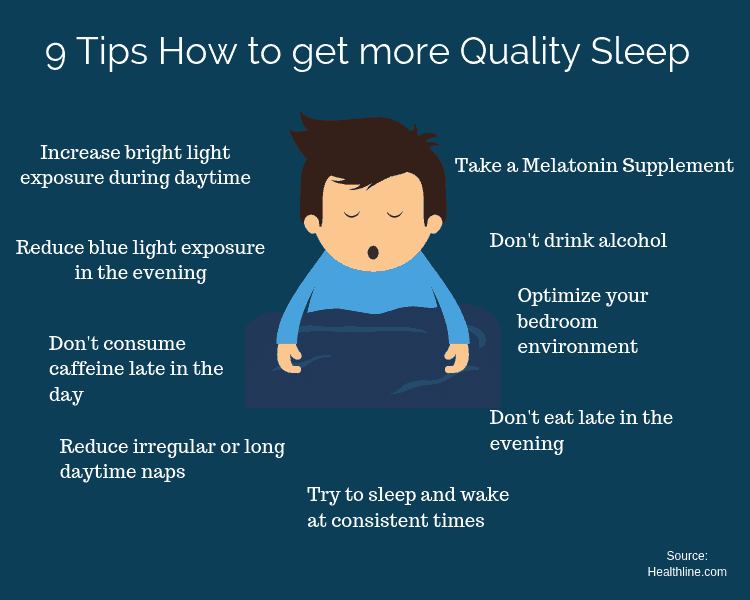
Stretching and Fascia Rolling for Muscle Relaxation
After heavy workouts with a lot of microtrauma in your muscles, it is important to relax them, so that they can rebuild.
Stretching has proven to be a beneficial tool for recovery, especially in form of reducing muscle soreness and stiffness (range of motion).
Before we dive in deeper, what actually is stretching?
“The application of force to musculotendinous structures in order to achieve a change in their length, usually for the purposes of improving joint range of motion, reducing stiffness or soreness, or preparing for an activity.”
If we now take a look at the goal that we pursue when seeking for recovery, it’s returning something that was lost. In this case reducing fatigue and re-establishing range of motion, as well as adapting (i.e. supercompensation) to the imposed training demands.
But does stretching really enhance recovery?
Without going into all the detailed scientific research here, I’ll summarize the most important points for you.
Stretching after a workout appears to have a little effect on reducing muscle soreness 1-7 days after exercise.
And helping to reduce muscles soreness leads to a more relaxed state from which on it becomes easier to rebuild those muscles.
Next up, static stretching. As research shows that static stretching increases the parasympathetic nervous system activity (PSNS) and therefore, may lead to improved relaxation. And that’s exactly what we’re looking for!
Muscles don’t grow in the gym, they grow outside!
Furthermore, static stretching appears to be an effective means for improving flexibility by causing changes to both the mechanical properties of the muscle-tendon unit and decreasing neural excitability.
Lastly, static stretching initially reduces blood flow, capillary region oxygenation, and the velocity of red blood cells to the muscle, but this is significantly increased after the stretch.
Just as stretching has a positive impact on recovery, fascia or foam rolling have similar benefits.
Probably most people still use foam rolling as part of their preparation before training, nevertheless it also has positive effects when using it post-workout.
Based on a research report published in the Journal of Athletic Training it becomes clear that foam rolling also reduces muscle soreness significantly.
In the study, 8 collegiate men conducted a 10×10 squat session to completely deplete their quads. They performed that two times, once with foam rolling afterwards and another time without any foam rolling.
The foam rolling procedure consisted of 2 rounds of rolling for 45 seconds each over the quads, adductors, hamstrings, IT band, and glutes.
What did the results show?
As a result, the researchers concluded that the delayed onset muscle soreness (DOMS) was significantly reduced when foam rolling was performed.
On a final note, as you can see stretching has several benefits that can help us boost recovery.
Personally, I include stretching and foam rolling in my daily routines, after workouts or on rest days. Especially stretching the lower part of my body helped me to increase mobility (range of motion) and feel more “smooth” overall.
Thus, I suggest to give it a try. There are endless videos and content out there in the Internet about “best stretches for X…” Just check out the links below this chapter, you’ll find amazing input that will help to boost your performance.
Take rest days and deloads as serious as training days!
Training hard and wearing yourself out in the gym, that is fine and dandy but…
Who doesn’t rest won’t make it far.
Pretty straightforward, right?
How should your body build muscles if you don’t give him time to recover?
Think of it this way, if you don’t take care of your car, some day it will conk out.
The same applies for our body. If we train intensively 4-6 times every week, have some nights with little and mediocre sleep and maintain this pattern over several weeks, even months, our body will run into difficulties.
You need to take rest days as serious as your training days.
I know that particularly beginners hate taking breaks and just want to go harder and harder. Trust me though, that this is not sustainable in the long run.
For example, currently I am training 5 times per week (Monday-Friday) and then I take the weekend off. That is enough for my body to take a break and come back prepared next Monday.
When I notice I still feel depleted and sore after the weekend, then I either take another rest day or I even go for a full deload week if I am highly fatigued.
What is a deload?
Basically, a deload can be considered a “light” training week where you reduce your volume by 50-60%. Exercises and number of sets are kept the same.
That way you enable your muscles and passive structures such as joints, tendons and ligaments to heal and recover. Thereby remaining consistent with the exercise movement patterns.
Personally, I would only recommend implementing a deload when really necessary, otherwise it is purely a waste of time that you could use more productive as you’re not building any muscle during that time.
So, if you train in mesocycles of approximately 4-5 weeks with increasing volume, most likely (if you planned ahead properly) you’ll get depleted more and more over the weeks and eventually become forced going into a deload phase sooner or later.
There are two ways of using deloads. Approach A is called planned and Approach B reactive.
In Approach A you try to accurately plan ahead when you will need to take a deload. More precisely, you program a mesocycle of 5 weeks and then you set the volume/intensity/frequency exactly right so that your body is wiped out at the end of week 5.
Approach B works differently. As the name already implied, you’re reacting. So, you listen to your body and take a deload whenever you feel it is necessary.
I’ve written a much more detailed article about deloads that you can find at the end of this chapter in the useful link section, make sure to check it out!
In essence, you should be aware by now that recovery is not just an optional variable that can benefit your performance. Instead, it is an unbelievably important aspect that oftentimes gets way less attention than it deserves.
So, guys, if you want to grow then ensure you sleep good and enough, do some stretching and foam rolling post-workout, take rest days as serious as your workouts, and lastly implement deloads whenever necessary!
Post Workout Nutrition
Recovery starts directly after every workout.
We burned a lot of energy during an intense session and where do we get that energy from?
Exactly, from our nutrition! So, in order to fill up the glycogen stores we need to provide some food as soon as possible right after training.
You all probably heard these sayings that unless you consume a protein shake at latest 30 minutes post-workout, you won’t build any muscles…
Is that true?
To be honest, I hold relatively cheap on that.
There are studies and research that show proven benefits of consuming a protein shake post-workout.
On the opposite other studies reveal the same outcome when taking your protein before the workout.
However, there is no doubt that you need to supply food after exercising. Whether that is supposed to be 15 min or 30 min after or before training, that does not butter no parsnips in my opinion.
This exact timing can be considered fine tuning that might account to 1% additional efficiency, which indeed is crucial for professional athletes.
However, for the average person who wants to build some muscles this is bean counting.
At the end of the day it is primarily important that you consume your proteins and nutrients and not whether you did that at 6pm or 3pm… That is of subordinate significance.
Keep the main thing the main thing and don’t get too busy on small details.
Nevertheless, a protein shake can be very convenient when you’re in a hurry and don’t have the time to cook afterwards. In these cases, a protein shake is just perfect.
It does not really matter how you provide your nutrients, whether via protein powder, chicken or tofu. By the end of the day, only the total balance matters.
Having said that, I would still always prefer a full-value meal over supplements. Even though the protein shake has the required protein, but for the simple reason that it falls short on valuable and important micro nutrients like vitamins, fiber and trace elements.
As the name already implies, they are meant to SUPPLEMENT your nutrition and not to SUBSTITUTE!
This is a very important difference!
If you’re wondering what supplements I use myself and what I would recommend, then keep reading. I’ll cover all that in the last chapter!
Calculate your macros as you learned in the beginning, track your meals (calories + macros) for maybe 2 weeks until you’re familiar with the nutritional value of your favorite foods and then just eat, eat and eat.
To wrap up, whether eating 15 or 45 min directly after your workout is not the deciding factor whether you build muscle in my point of view.
I recommend to eat whenever it is possible for you after training. If at some point you’re too busy and it takes several hours then I would take something like a protein shake or bar with me to encourage instant recovery.
Always put full-value meals over supplements and don’t get stuck with too small details if you’re a beginner. Supply all your required macros, train hard and consistent, recover and watch your body grow.
Active Recovery
Active recovery? I thought recovery takes place on the sofa in front of the TV?
That sounds like a contradiction in terms, right? Recovery implies taking rest, maybe even a day off, whereas activity means the complete opposite.
Nowadays, the more commonly used approach is the so-called passive recovery.
Passive recovery, as the name already suggests, is based on fully settling down without doing any intense physical activity.
Active recovery uses a different approach. Namely, doing some light exercise after a workout, in between sets of your workout or even a couple of days after a competition or any heavy event that accumulated a lot of fatigue.
You might now think, isn’t that counterproductive? Tackling fatigue with even more fatigue?
Well, as some research shows it is not. But to be clear, we’re talking about light exercise. Things like jogging or even walking that do not require a lot of effort, otherwise you would have a good point.
I don’t want to bother you by going too much into detail on those research, so I just summarize the benefits for you below.
- It reduces the buildup of lactic acid in the muscles, minimizing post-exercise stiffness and discomfort. Actively recovering helps to lower the lactic acid levels in your body a lot faster than beginning to rest immediately would
- It helps alleviate fatigue and improve moods that typically crash after a heavy sporting event
- It promotes blood flow to the joints and muscles, counteracting inflammation
- It maintains the heart rate at a more steady state, improving endurance and training volumes
Apparently there has been a lot of misinformation in the fitness industry promoting the myth that taking entire days off is necessary.
Don’t get me wrong, that can and might be necessary. I also take the weekend off but only from heavy intense workouts. Instead I go biking, walking or do some foam rolling.
There are many options to choose from.
I like to think of it this way: Our bodies are meant to move, right?
We all know how it feels when sitting the entire day on the sofa watching TV or just doing nothing. We feel lazy, unbalanced and uncomfortable (at least I do).
Along these lines, the previously mentioned deloads come into play.
Instead of taking a whole week off from training, we reduce the volume or intensity by around 50%.
That way we’re able to give our muscles, tendons, joints and ligaments some time to recover since active recovery (in this case, deload) is less demanding than your normal workout.
How could active recovery look like?
There is no right or wrong here.
It is important that you choose something that can be conducted easily, so that it illustrates the idea of “active recovery”.
Things like slow jogging, walking or Yoga. Deloads (light workouts), stretching or foam rolling. Swimming, cycling or hiking.
What’s best for you depends on the sport you’re doing. If you’re playing tennis or soccer, then a light training session is probably the most effective. Runners go for a light run. Bodybuilders lift lighter than normal and so on…
You get the idea, right?
To conclude this subchapter, I think we should all primarily listen to our body. Of course, as I am not a professional nor competitive athlete, I am speaking for all people that do sports with serious passion and commitment.
This might be totally different for pro athletes, but for us I think it’s about finding the happy medium.
If you’re really feeling fully depleted, then stay home and take one or two days off. If you feel like being active, what I do feel like most of the times, then go out and get some active recovery.
Listen to the signals your body sends. The better you get at understanding your very own body, the easier it becomes to react and program ahead in the future.
However, I think the old myth that rest must be done passively is outdated and that we seriously should consider active recovery as it comes with several scientifically proven benefits.

What's next?
Improve your recovery quality by brushing up your knowledge with the resources below! What’s the first thing you start with?
-
- Maximize Post Workout Recovery
- Post workout recovery for muscle growth
- Joint Health for Athletes Guide
- Deload Guide
- Stretching for athletic performance
- Polyphasic Sleep Guide
- How to use your non-workout days optimally
- How to recover from a big lift
- 10 Ways to optimize Post Workout Recovery
- 6 Post Workout Recovery Tips for more muscle growth
- How to get stronger by improving post workout recovery
- 10 Muscle Recovery Tips
Chapter 7
Do you need Supplements to gain Muscle?
Unfortunately, there is way too much misinformation within the fitness industry. The days in which supplements were preserved for big bodybuilders are long gone. Times are changing.
Today, supplements get marketed to nearly everybody. The promises that companies make sound too good to be ignored…
That’s one of the bigger problems why so many people fail to detect the rip off. The problem is that supplement bottles can literally say whatever they want, as they’re not speficially regulated.
Stop wasting your money on supplements that do absolutely nothing for you, rather focus on those that have scientific evidence backing up their claims.
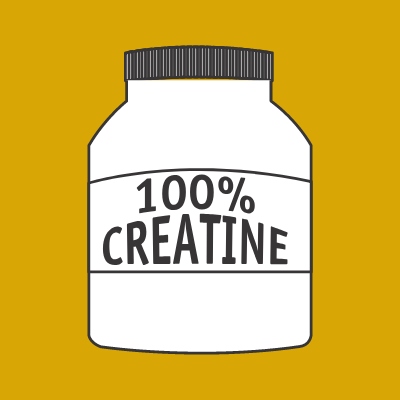
So, do we actually need supplements in our life?
An experiment conducted with the help of Dr. Stuart Gray from the University of Glasgow and other scientists, 24 volunteers between 20-67 years old were put on a 8 week lifting program. Half received a protein shake and the other only a placebo.
The results?
No significant difference in terms of increase in lean mass or muscle thickness has been documented.
Furthermore, a detailed research paper examinining the question: Who needs Supplements? came to the conclusion that most supplements are waste of money as their promised benefits cannot be fully approved. They say that in-depth robust research is missing in order to get to a definite conclusion.
I am not going to lie to you, guys…
In my point of view there are only two supplements on the market that are worth to buy looking at the value for money. Since I am working out, I’ve made use of in total a handful of different supplements, not less but not more either.
As the name already implies and I previously said, they are meant to SUPPLEMENT not SUBSTITUTE your diet.
There is no way around a good and healthy diet.
Your diet serves as the foundation, optimally it should, and it can (!) cover all essential nutrients that your body needs. Supplements should only be considered if necessary.
When is it necessary?
Frankly said, nearly everybody can live without supplements and cover all required nutrients with their usual day-to-day diet.
Why do I say nearly?
Well, as always, there are some exceptions. For example, people who have allergies that makes it impossible to eat certain foods or who are deficient in something (e.g. iron or magnesium). Then of course, it makes sense to consider using a supplement to facilitate their diet.
However, for most people it is totally possible to live only by whole foods.
I’ve seen so many people consuming whey protein as it would be their daily bread. But that’s the wrong way to think that protein powder serves as a replacement for natural protein sources.
Well, that might work in theory, but on the one hand it is expensive, and on the other hand it’s definitely not optimal. For the simple reason that most supplements lack the essential nutrients like vitamins, fibers or trace elements.
These need to be supplied by your diet!
Don’t waste your money on useless, and yes, I would say up to 90% or even more of all supplements are complete nonsense.
That’s why I am going to share with you the only two supplements that I think make sense to use (!) as a hobby athlete. Again, I am not talking about professional or competitive athletes, that might look completely different for them.
To be clear, you don’t need ANY supplement to build muscle at all. Whole foods are way more valuable than those chemically processed supplements.
Without further ado, let’s dig deeper into the supplements that I think are reasonable.
Creatine
We all probably heard at least once about creatine, right?
Overall, creatine is one if not even the best researched nutritional supplement in the entire fitness industry.
There are many studies that reveal the proven benefits that a supplementation of creatine brings along. As if this wasn’t already enough, there no serious side effects.
But what is creatine actually?
Basically, creatine is an amino acid composed of three amino acids:
- Arginine
- Glycine
- Methionine
Creatine is simply a substance that our body can transform into ATP (Adenosine Triphosphate) which is the human body’s currency of “energy”.
Creatine is non-essential, which means your body can produce it by itself.
Overall, you can produce through your kidneys, liver and pancreas 1-2 grams of creatine per day, granted you eat enough protein.
With natural foods, especially red meat and dietary supplements, you can also consume creatine directly.
We store creatine mainly in the muscles, but also in our hearts, brains and testicles.
What does creatine do? Why should you consider taking creatine?
In the first place, creatine helps us to get stronger and be more efficient. Some people claim that you can enhance your performance by 10-15%.
That sounds pretty tempting, doesn’t it?
Especially for strength athletes, creatine is almost indispensable.
But don’t forget that a healthy diet und consistent training build up your foundation. Without that creatine would be useless.
So, by now you should know that the sole use of supplements won’t lead you far. Yet, combined with the right nutrition, creatine can definitely boost your performance.
I recommend tracking your progress (which you should always do by the way) before starting to consume creatine. This way you can compare your performance before and while taking creatine to conclude the result.
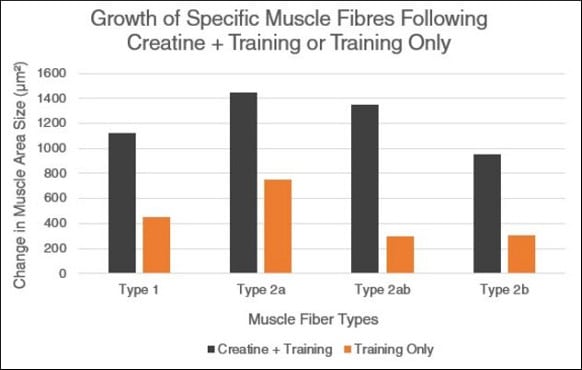
According to the results of the linked study that compares the growth of specific muscle fibres with creatine and without, you can clearly see the better results achieved by using creatine.
Source: Hultman E, et al. Muscle Creatine Loading in Men.Trusted Source Journal of Applied Physiology, 1996.
And how does Creatine work?
Think of it this way.
The human bodys ATP store is limited.
Whenever we perform an activity, whether walking, running or lifting weights. The more intense the activity the more energy (ATP) we need to use.
Once that energy (ATP store) is empty and we fall short on energy, normally our body would start to produce new ATP and that is where creatine comes into play.
As already said, creatine is substance that our body can easily transform into ATP. So, whenever the normal energy store is empty, we can resort to creatine.
The result?
Our body is supplied with new ATP and we can continue to perform where we would normally have to forfeit performance. For that simple reason creatine is also very popular amongst triathletes and marathon runners.
How much creatine should you take and in which form?
There are several forms of creatine, such as creatine monohydrate, crea pure or other mixed forms. I would always use either a creatine monohydrate or crea pure.
When talking about the dose, I recommend taking 5g on a daily basis without breaks throughout the entire year.
But wait a minute… What about a creatine loading phase?
To be honest, I do not hold with creatine loading phases. It is even scientifically proven that there is no difference in terms of performance between taking a high dose of creatine and then gradually reducing it or taking 5g regularly.
Whether you choose to buy creatine in form of capsules or as powder is up to your personal preference.
I am used to powder but that does not make any difference.
It is advisable to take a carbohydrate-rich meal for creatine intake to ensure optimal transport in the body.
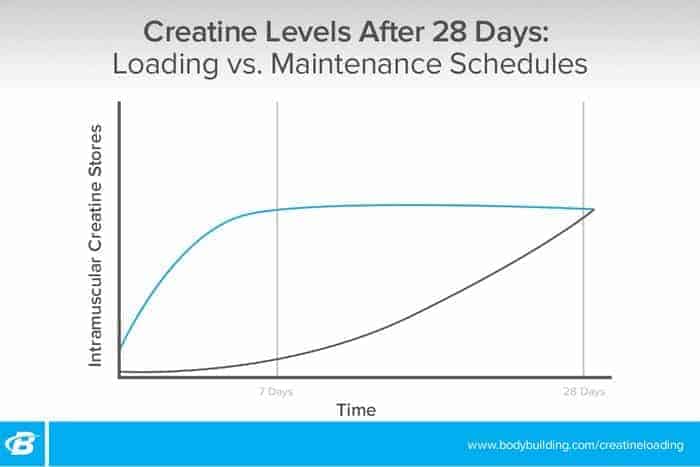
As this article from Bodybuilding.com reveals, there is no benefit in loading with creatine (higher dosage in the beginning) over taking a steady “low” amount.
Since the intramuscular creatine stores are limited, values for both approaches lead to the same outcome.
They even go a step further and say: “Another note on loading: Skeletal muscle has a limited capacity to store creatine. It appears that with a loading dose of 20 grams, your muscles reach maximum capacity after about two days. By the third day of a five-day loading period, up to 60 percent more creatine is lost through urine. So if you decide to load, anything after three days may be excessive, although this can vary by individual.”
When should you take creatine?
A study by the Journal of the International Society of Sports Nutrition shows that creatine should be taken mainly after exercise.
This is based on the fact that ATP (energy) is most urgently needed at this particular time. After having burned a lot of energy, our body needs to refill its store. Pretty logical in itself, right?
Does creatine have side-effects?
As mentioned earlier creatine is one of the best studied and researched nutritional supplements.
When speaking about a normal dose of 3-5g per day, there are no documented side-effects. However, taking higher doses of even 20g, as many people do in those loading phases, symptoms like diarrhea, stomachache and fortified wateriness can occur.
So, to conclude, creatine is a very safe, affordable and most importantly effective supplement that I can fully recommend using.
Whey Protein
My second nutritional supplement that I can recommend light-heartedly is the good old Whey Protein.
Everybody who has been at the gym once has heard about the post-workout protein shake, which is nothing else than whey protein mixed with water or milk.
So, what is whey protein actually?
As the name implies, it is nothing different than protein but in powder form.
To be precise, whey protein is a mixture of proteins isolated from whey, which is the liquid part of milk that separates during cheese production.
Milk is composed of two components: 80% casein and 20% whey.
So, basically whey is just a byproduct of milk getting processed.
Whey protein is considered a “complete protein” as it contains all 9 essential amino acids.
How does whey protein benefit us?
As I am of the opinion that you don’t need any supplement at all to build muscle, there is no doubt that they can be useful occasionally.
The same applies to whey protein.
On the one hand, it is super easy and flexible to use. You can mix a shake with water or milk, put it in your quark (curd) or make super delicious protein pancakes and smoothies.
There are many ways how to use whey protein for baking as well.
On the other hand, whey protein is super easy to digest for our body. It is the most simple form of protein to absorb and deploy where needed. Because compared to chicken or beef, your body first have to subvert and assemble it.
Moreover, many people argue that whey protein is one if not the most qualitative protein available. I do not necessarily agree with that, yet there is nothing to say against whey protein either.
So, to sum up, there is no real superlative benefit that other foods can’t give us too. But whey protein scores on grounds of its convenient usage options and availability.
Therefore, having a good whey protein at hand is always reasonable. However, I realized that whenever I’ve had protein powder at home the consumption gained the upper hand.
Initially the plan was to take a protein shake when I am in a hurry or to make some fabulous pancakes from time to time, but that incorporated into daily use quicker than you can think…
That’s why I don’t include whey protein in my diet regularly, but rather get some every now and then as a reward.
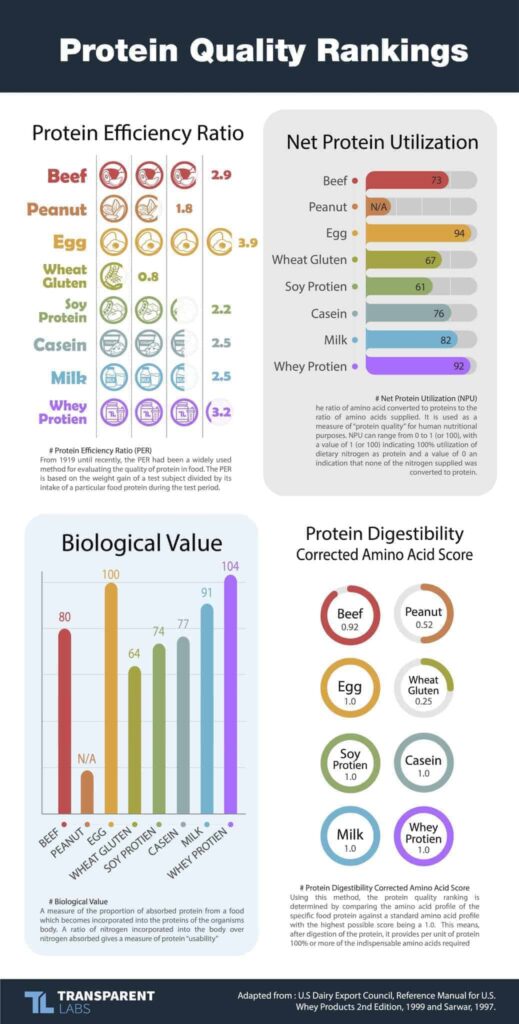
According to an article of TransparentLabs, Whey Protein Isolate (!) is optimal for muscle growth.
Keep in mind that we’re talking about Whey Protein Isolate and not about a standard Whey Protein. However, there isn’t a huge difference between both products. Yet, the isolate version has even less carbs and a higher protein content in comparison.
Many people use especially Whey Protein Isolate when they want to lose weight since they can save a couple of calories on top. Nevertheless, we’re talking about solely few calories (~50kcal), which obviously is dependent on the manufacturer.
If we take a look at the findings from the U.S Dairy Export Council, you can see that Whey Protein Isolate performes very well in every single category. So, in terms of Protein Digestibility, Net Protein Utilization, Biological Value and Protein Efficiency Ratio, the Whey Protein Isolate either comes off first or second place.
When should you take whey protein?
There is no such thing as “the best time” to take whey protein. The only reason, next to its delicious taste, is to fill up your remaining protein demand or substituting other protein sources.
You can take a protein shake whenever you want to. Whether before or after training, in the morning or before going to bed. Don’t worry about the timing too much.
Keep the main thing the main thing, and that is eating properly, training hard and consistent and getting sufficient recovery.
Does whey protein have side-effects?
Whey protein does not have conventional side-effects on average. I haven’t experienced any issue by using protein powder so far.
Small things such as “protein farting”, which can probably be traced back to the overall high protein consumption, are normal.
Other people complain about amplified acne, but this is mainly due to dairy intolerance and genetics. So that is not in particular whey protein causing the acne.
However, if that still isn’t the case with other products/foods containing a lot of dairy, then I simply recommend staying away from whey protein.
Apart from that, there aren’t any commonly known side-effects.
How much whey protein should you take?
The same concept as before, there isn’t a specific intake recommendation. That really depends on your overall daily protein requirement.
If you use whey on a daily basis, I suggest sticking to around 30g (normally one or two scoops) since it is meant to supplement not substitute your diet.
On a final note, whey protein is just as creatine a safe nutritional supplement that is definitely not essential but has its advantages. If you want to use whey, then go for it, nothing speaks against it.
So, these are the two nutritional supplements that are reasonable in view of value for money in my opinion.
What's next?
After I’ve pointed out my opinion in view of supplements and presented my top two supps, below I included some very interesting resources, such as case studies and research on that topic.
-
- Will supplements help to put more muscle on? Case study and experiment
- Supplements – Who needs them? Research paper
- Which supplements work and which don’t?
- The only two supplements you need!
- The only two proven supplements to help you build muscle
- Creatine Guide
- Do you need supplements to build muscle?
- Supplements for faster muscle growth
- The 10 most important vitamins for our muscles
Well done, you’ve made it until the end!
That’s all there is to gaining muscle mass.
Many people overcomplicate the whole concept without any reason. As you have seen these are mainly basic aspects that need be adhered to.
Fitness is no rocket science. Eat enough of the right things, train smart, hard and consistent and get appropriate recovery. It’s that simple.
I hope you enjoyed this guide on how to gain muscle. If you took out something useful today, I’d appreciate if you share it with your friends and followers.
Did I miss some important points?
Share your thoughts with us in the comments below!
Thanks, and good gains to ya all.


